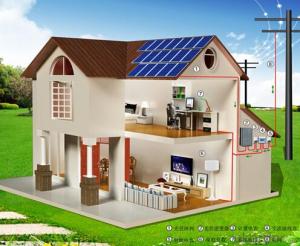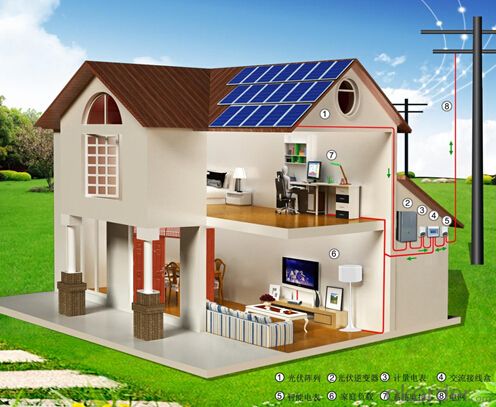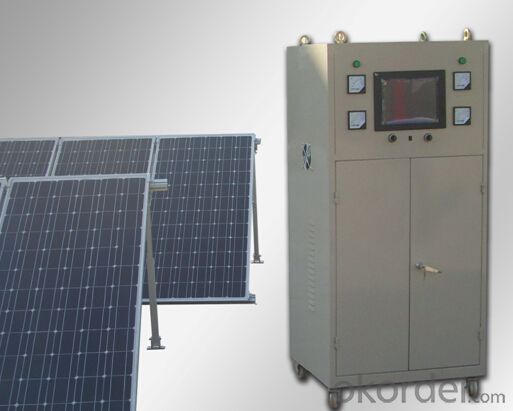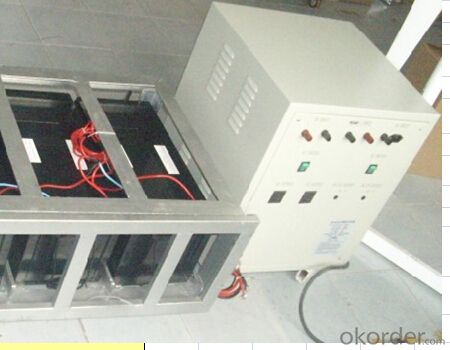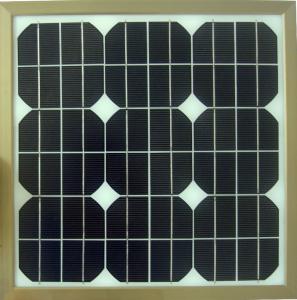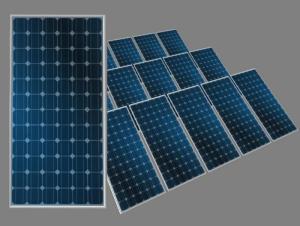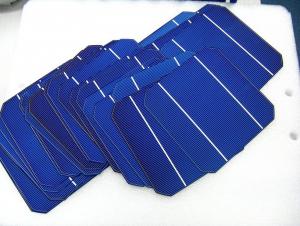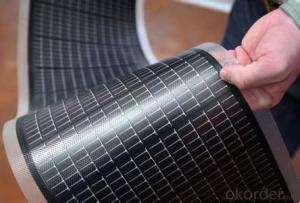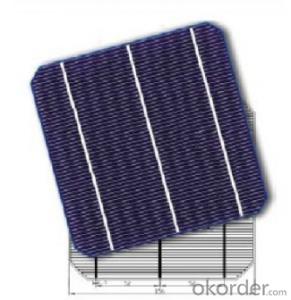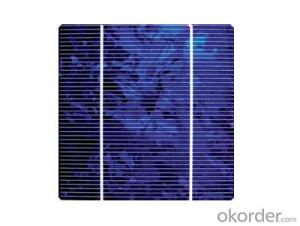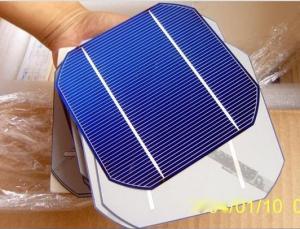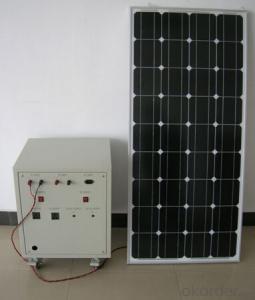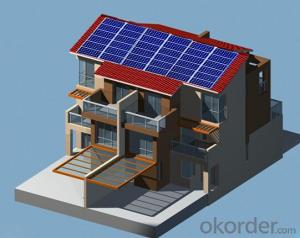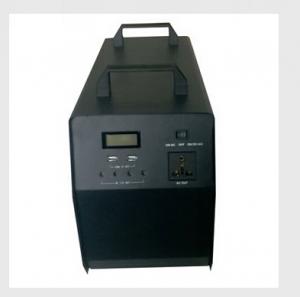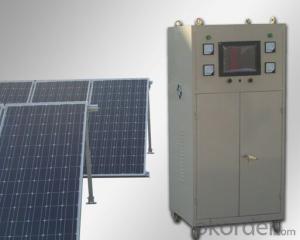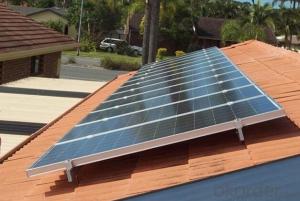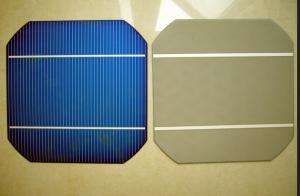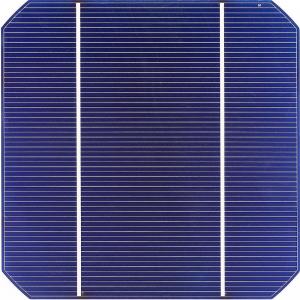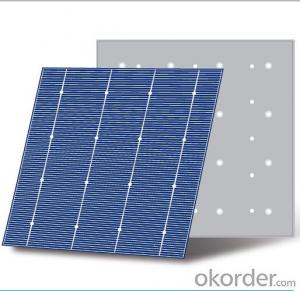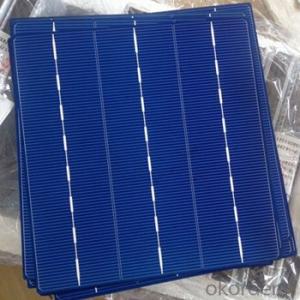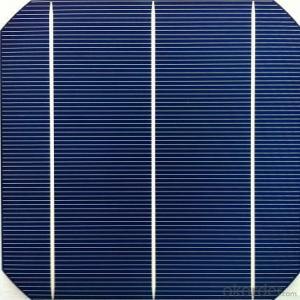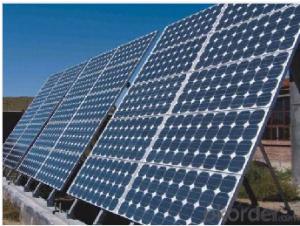Solar Energy CNBM Solar Roof Solar System 10000W with High-Efficiency Solar Cells - Popular in Africa
- Loading Port:
- Shanghai
- Payment Terms:
- TT OR LC
- Min Order Qty:
- 1 PCS
- Supply Capability:
- 3000 PCS/month
OKorder Service Pledge
OKorder Financial Service
You Might Also Like
Introduction of Solar Home System
Solar arrays are designed to provide specified amounts of electricity under certain conditions. The following factors are usually considered when determining array energy performance:
Characterization of solar cell electrical performance
Determination of degradation factors related to array design and assembly
Conversion of environmental considerations into solar cell operating temperatures
Calculation of array power output capability.
The amount of electricity required may be defined by any one or a combination of the following performance criteria:
Power output -- power (Watts) available at the power regulator, specified either as peak power or average power produced during one day.
Energy output -- the amount of energy (Watt-hour or Wh) produced during a certain period of time. The parameters are output per unit of array area (Wh/m²), output per unit of array mass (Wh/kg), and output per unit of array cost (Wh/$).
Conversion efficiency -- defined as "energy output from array" ÷ "energy input from sun" × 100%.
This last parameter is often given as a power efficiency, equal to "power output from array" ÷ "power input from sun" × 100%. Power is typically given in units of Watts (W), and energy is typically in units of Wh, or the power in Watts supplied during an hour.
To ensure the consistency and quality of PV systems and increase consumer confidence in system performance, various groups -- such as the Institute of Electrical and Electronics Engineers (IEEE), the International Electrotechnical Commission (IEC), and the American Society for Testing and Materials (ASTM) -- are working on standards and performance criteria for PV systems.
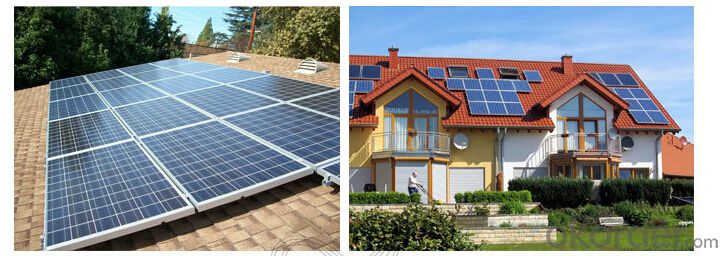


Working Principle of Solar Roof System
The stand alone Solar Home System is an off-grid solar system which uses batteries to store the solar energy. Stand alone solar system solutions design for those who are not able or willing to connect to electricity grid.
Specification of Solar Home System
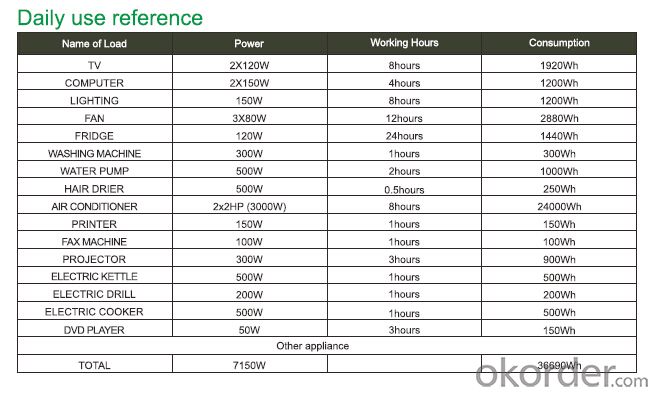
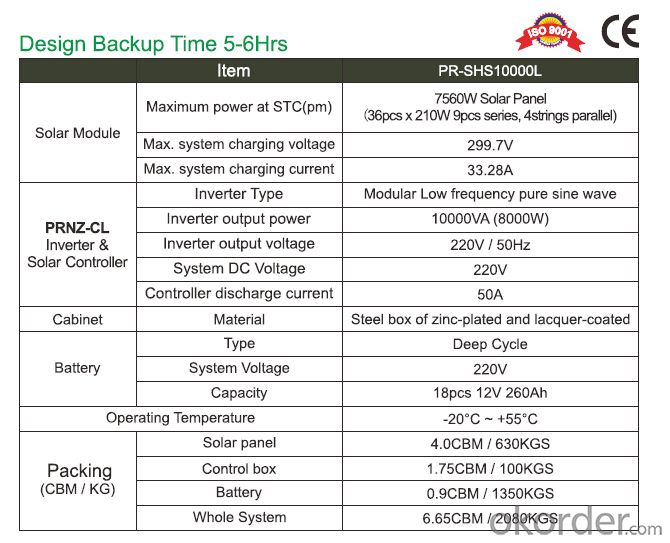
Product Features of Solar Home System
1. Off grid solar power system is mainly used for application with relatively-small power consumption, and the areas have no grid network coverage, or grid power is unstable or outage condition.
2. It’s composed of solar panels, hybrid solar inverter, battery bank, solar panel mounting racks, and other accessories required fora complete home solar power system.
3. The battery bank gives a stable power output to the solar inverter which converts DC to AC to power loads, and provides power backup in rainy or cloudy days.
4. The solar panels generate electricity at daytime and charge the battery bank.
5. The off grid home solar power system provides grid power bypass in case of battery power shortage when sunshine is not enough.
6. All the off grid home solar power system configurations are worked out by scientific calculation and design.
Advantage of Our Solar Home System
1 Excellent Performance: Our Solar Home System is composed by Brand Standard Kits with high quality. Our solar system has the advantage of high efficiency and stable operation. We can ensure our product with a long life period.
2. Small Orders Accepted: We can accept small orders as our customer’s trial order.
3. Warehouse: We have warehouse overseas which can bring great convenience to our customer to pick up the products.
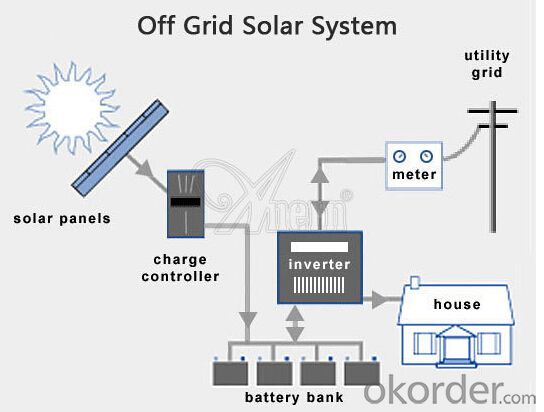
Terms and Conditions
1. Trade terms: FOB Shanghai
2. Payment terms: 30% T/T, balanced before shipment/ LC at sight before shipment. Actual Terms can be negotiated for big order.
3. Package: Exported standard package suitable for tough handling and sea transport.
4. Delivery: Goods to be ready within 10~30 days depending on order quantity.
5. Warranty: 10 years for solar panel, 2 years for controller/inverter/battery.
FAQ
Q: Could you introduce the background of your company?
A: We are a Group corp. with 1GW capacity in China, which is Okorder’s registered VIP Supplier, possess Financial Service from Okorder.com.
Q: Required mainly certificates (CE&IEC/TUV/RoHS)?
A: Our products are certificated by CE RoHS, IEC, ISO, TUV, UL etc.
Q: Your main exported market is?
A: Main markets of our products is: South-east Asia, Mid-east, Arica, East Europe and Latin America.
- Q: Can solar cells be used for water desalination?
- Yes, solar cells can be used for water desalination. Solar energy can be harnessed to power the desalination process, where the energy from the sun is converted into electricity by solar cells and used to separate the salt and impurities from seawater, making it suitable for drinking or agricultural purposes. This method, known as solar desalination, is an environmentally friendly and sustainable solution for addressing water scarcity in coastal areas.
- Q: How do solar cells handle bird droppings or other debris?
- Solar cells can be affected by bird droppings or debris as they can block sunlight from reaching the cells, reducing their efficiency. Regular cleaning and maintenance are essential to ensure optimal performance of solar cells and prevent any potential issues caused by bird droppings or debris.
- Q: What are the 3 things you need to know before you start to make solar cells?
- Sorry that I can not provide any help because I know nothing about solar cells.
- Q: What is the impact of maintenance and cleaning on solar cell performance?
- Maintenance and cleaning play a crucial role in maintaining optimal solar cell performance. Regular maintenance, such as inspecting and repairing any damages, ensures that the cells are functioning efficiently and effectively. Additionally, cleaning the solar panels helps remove any dirt, dust, or debris that can accumulate and hinder sunlight absorption. By keeping the panels clean and well-maintained, solar cell performance is maximized, resulting in higher energy production and increased overall efficiency.
- Q: Can solar cells be used in disaster response vehicles?
- Yes, solar cells can be used in disaster response vehicles. They can provide a reliable and renewable source of power to charge essential equipment and devices, such as communication systems, lights, and medical equipment. Solar cells are especially useful in remote or off-grid areas where traditional power sources may be disrupted or unavailable during a disaster.
- Q: Can solar cells be used to power electric gates?
- Yes, solar cells can be used to power electric gates. Solar cells convert sunlight into electricity, which can be stored in batteries and used to power various devices, including electric gates. This allows for a sustainable and environmentally friendly solution to power electric gates without relying on traditional energy sources.
- Q: Can solar cells be used for powering communication towers?
- Yes, solar cells can be used for powering communication towers. Solar panels or cells can generate electricity from sunlight, which can be converted and used to power various electronic devices and equipment, including communication towers. This renewable energy source is increasingly being adopted to reduce reliance on traditional power grids and decrease carbon emissions.
- Q: Can solar cells be used for powering airports?
- Yes, solar cells can be used for powering airports. Solar energy is a sustainable and renewable source of power, and airports have large areas of open space that can be utilized for installing solar panels. By harnessing the power of the sun, airports can reduce their reliance on non-renewable energy sources, lower their carbon footprint, and potentially save on energy costs in the long run. Additionally, solar power can also be stored in batteries for use during non-sunny periods or at night, ensuring a continuous power supply for critical airport operations.
- Q: Can solar cells be used for water heating?
- Yes, solar cells can be used for water heating. Solar thermal systems use solar energy to heat water directly, while solar photovoltaic systems can generate electricity to power water heaters. Both methods are efficient and environmentally friendly alternatives to traditional water heating systems.
- Q: How are solar cells tested for quality?
- Solar cells are tested for quality through a series of rigorous assessments. This typically involves measuring their electrical characteristics such as efficiency, power output, and voltage under standardized conditions. Additionally, durability and reliability tests are conducted to evaluate their performance under different environmental conditions, such as extreme temperatures or humidity. Other quality tests may involve visual inspections, spectral response analysis, and thermal cycling to ensure that the solar cells meet the required standards and perform optimally over their expected lifespan.
Send your message to us
Solar Energy CNBM Solar Roof Solar System 10000W with High-Efficiency Solar Cells - Popular in Africa
- Loading Port:
- Shanghai
- Payment Terms:
- TT OR LC
- Min Order Qty:
- 1 PCS
- Supply Capability:
- 3000 PCS/month
OKorder Service Pledge
OKorder Financial Service
Similar products
Hot products
Hot Searches
Related keywords
